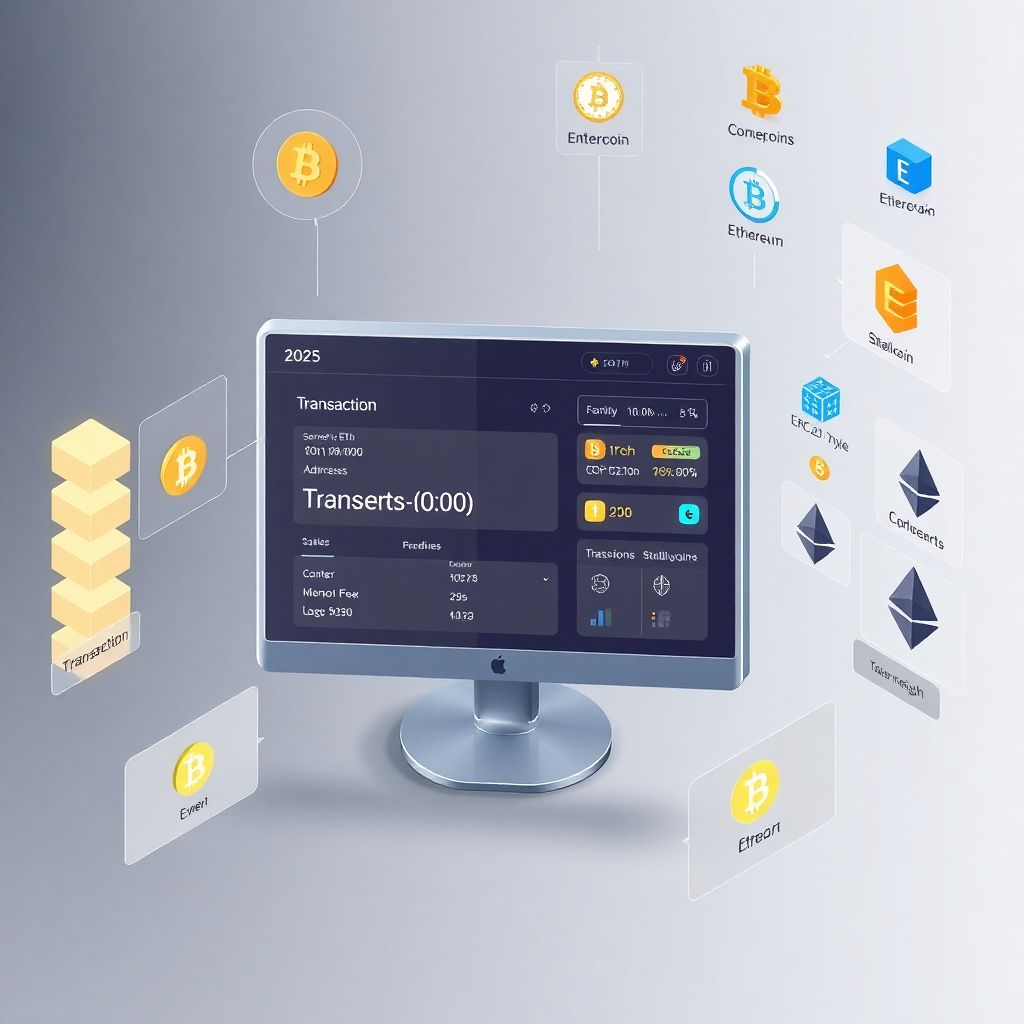Why blockchain explorers matter when you verify transactions
If you move any serious amount of crypto in 2025, knowing how to verify transactions on a blockchain explorer isn’t “nice to have” anymore — it’s basic operational hygiene. Explorers let you see what’s *actually* on-chain instead of trusting an exchange interface, a wallet notification, or a screenshot someone sent you on Telegram.
Below is a practical walkthrough: a bit of history for context, the core principles, concrete examples, and the mistakes people still make. At the end — a short look at where this is all heading over the next few years.
—
Historical background: from geek tools to industry standard
The early days
When Bitcoin launched, there were no polished blockchain explorer tools for transaction verification. Enthusiasts either ran full nodes or used raw command‑line utilities to inspect blocks and transactions. It worked, but it was painful and definitely not friendly for businesses or casual users.
The breakthrough came with early web explorers like Blockchain.info (now Blockchain.com) and Blockexplorer. They turned opaque binary data into something readable in a browser:
– Block height
– Transaction hashes
– Inputs and outputs
– Confirmation counts
This is when the idea of a “public audit interface” for blockchains really took off.
Multi‑chain and analytics era

As Ethereum, stablecoins, and DeFi appeared, simple explorers had to evolve. Users needed to inspect smart contract interactions, token transfers, gas usage, and internal transactions. New explorers introduced:
– ABI decoding for contracts
– Human‑readable events and logs
– ENS / name resolution
– Token balances and portfolio‑style views
On the institutional side, enterprise blockchain analytics and transaction monitoring software grew on top of raw explorer data, adding clustering, risk scoring, and compliance dashboards. What started as hobby sites turned into critical infrastructure for exchanges, funds, and regulators.
—
Basic principles: what an explorer really shows you
Concept 1: the blockchain is the database, the explorer is just a window

The blockchain itself stores all transaction and block data. A blockchain explorer:
1. Runs one or more nodes (or connects to them).
2. Indexes data into its own database for fast querying.
3. Renders that data via a web or API interface.
So when you learn how to verify crypto transactions on blockchain explorer websites, remember: you’re not “asking the explorer for the truth”; you’re *viewing* what its backend nodes see on-chain. That’s why using several explorers for critical checks is a smart habit.
Concept 2: transaction lifecycle
Every on‑chain transfer goes through a few stages:
– Broadcast / mempool – The transaction is signed and sent to the network, waiting in the mempool of nodes.
– In block / first confirmation – A miner/validator includes it in a block.
– More confirmations – Additional blocks are built on top, making the transaction harder to reverse.
Explorers usually label status as:
– Pending / unconfirmed
– Confirmed (with `N` confirmations)
– Failed / dropped / replaced (for some chains)
When you verify a crypto payment, the number of confirmations you require depends on the asset, the amount, and your risk appetite.
—
Step‑by‑step: how to use explorers to verify a transaction
1. Identify the key data you need
To check a transaction, you typically need *one* of these:
– Transaction hash (TXID)
– Sender address
– Receiver address
– Deposit address from an exchange
The transaction hash is the most precise; addresses are helpful when the hash is unknown.
2. Pick an appropriate explorer
There’s no single “best” explorer for everything; you choose by chain and use case:
– For Bitcoin, the best bitcoin blockchain explorer for tracking payments might be the one that shows mempool fee estimates, multi‑sig details, and clear input/output labeling.
– For Ethereum and EVM chains, look for decode of contract calls, token transfer tabs, and internal transaction traces.
– For newer L2s and sidechains, use explorers officially linked from the protocol’s website or docs.
Using unknown third‑party explorers is possible, but always cross‑check at least once with a well‑established one.
3. Search and interpret the result
Once you paste a TXID or address into the explorer:
– Confirm you’re on the right network. ETH on Ethereum mainnet is not the same as ETH on an L2 or testnet.
– Check transaction status. Pending, successful, or failed.
– Check the recipient address. It must match exactly what you expect.
– Check amount and asset. On EVM chains, verify token contract address as well, not just the ticker.
– Check fee and confirmations. Ensure it’s not stuck with an unrealistically low fee.
If any of these dimensions don’t line up, treat the transaction as *not verified*.
—
Concrete examples: Bitcoin and Ethereum flows
Example: verifying a Bitcoin payment
Imagine a client claims they sent you 0.1 BTC for a service.
1. They send you a TXID.
2. You open a reputable BTC explorer and paste the TXID.
3. You verify:
– One of the outputs is exactly 0.1 BTC.
– The output address is your receiving address.
– The transaction status is “Confirmed” with, say, 3+ confirmations.
If the explorer shows “Unconfirmed” for a long time, it might be under‑funded on fees and at risk of being dropped or delayed.
Example: verifying an ERC‑20 token transfer
For a USDC transfer on Ethereum:
1. Paste the TX hash into an Ethereum explorer.
2. On the Overview, you may only see “Interaction with contract”.
3. Open the Token Transfers or Logs/Events tab.
4. Confirm:
– Token contract matches the official USDC contract.
– The To address is yours.
– The amount matches what you expect.
Because token transfers are just contract events, missing this extra step is one of the easiest ways to misread a transaction.
—
Beyond basic verification: explorers in business workflows
Integrating explorers into operations
For individuals, a browser and a bookmark bar are usually enough. For businesses, manual checks don’t scale. They either:
– Run their own nodes and indexing infrastructure; or
– Integrate explorer APIs and third‑party data providers.
This is where enterprise blockchain analytics and transaction monitoring software becomes relevant. These systems enrich basic explorer data with:
– Address clustering (e.g., exchange wallets, mixers)
– Heuristics for wallet behavior
– Risk scores and sanctions screening
– FIAT equivalents and P&L analytics
Under the hood, they still rely on the same fundamental primitives that a public blockchain explorer exposes.
Compliance and AML/KYC usage
Regulated entities can’t just “see” the transfer; they must assess its *risk*. Crypto compliance tools using blockchain explorers for aml and kyc combine on‑chain data with off‑chain intelligence:
– Known bad actors and seized wallets
– Darknet market and mixer connections
– Jurisdiction‑specific watchlists
From your perspective as a user, it means a transaction can be valid on-chain but flagged as high‑risk by compliance systems based on its history.
—
Common misconceptions when verifying transactions
“Explorer says completed, so funds are mine forever”
A transaction being confirmed doesn’t automatically protect you from:
– Chargebacks via centralized services. An exchange might reverse a credit internally even though the on‑chain move is final.
– 44‑style reorgs on small chains. On minor or low‑hashrate chains, even “confirmed” blocks can be orphaned.
On major chains like Bitcoin and Ethereum mainnet, deep confirmations (e.g., 6+ on BTC) make reversals extremely unlikely, but context still matters.
“If an explorer doesn’t show it, the transaction is fake”
Sometimes a transaction is real but:
– It’s still in the mempool and the explorer only shows mined transactions.
– It was broadcast to a limited peer set and hasn’t propagated widely yet.
– You’re on the wrong network or using a testnet explorer by mistake.
If someone sends a screenshot of a “successful” transaction but *no major explorer* can see the hash after ~10–15 minutes, that’s a strong red flag.
“All explorers show exactly the same thing”

In practice:
– Some explorers hide dropped/failed transactions.
– Others truncate mempool data or don’t show low‑fee TXs.
– Different explorers may decode contract calls differently or label addresses inconsistently.
For large or sensitive transfers, treat one explorer as a *view*, not as the single source of truth. Cross‑checking takes seconds and avoids unnecessary disputes.
—
Useful habits when using blockchain explorer tools for transaction verification
– Bookmark explorers for each chain you actually use (mainnet + L2s).
– Learn the visual layout: where to find status, confirmations, token transfers.
– Always verify the token contract, not just the name or ticker.
– For high‑value transfers, check the TX on at least two independent explorers.
These small routines dramatically reduce operational mistakes.
—
Future outlook: where transaction verification is heading (2025 → 2030)
We’re in 2025, and explorers are already miles ahead of where they were five years ago. The next step is moving from “raw ledgers” to *context‑rich* verification.
You can expect:
– Identity‑aware layers (opt‑in). Instead of just addresses, you’ll see verified entities for certain flows: regulated custodians, licensed exchanges, audited treasuries.
– Native risk scoring. Explorers will embed basic risk flags by default, making it harder to accidentally interact with sanctioned or compromised wallets.
– Better multi‑chain abstraction. One unified view that shows a transaction’s path across L1, L2, bridges, and even different ecosystems, rather than forcing users to hop between sites.
– Explorer‑quality UX in wallets. The line between wallet UI and explorer UI will blur: more wallets will embed explorer‑style decoding directly into the transaction confirmation screen.
At the same time, more advanced actors will keep pushing obfuscation: mixers, privacy layers, and new L2 designs. That means explorers and analytics platforms must keep improving their heuristics, while still preserving user privacy where it’s legally and ethically appropriate.
Finally, for enterprises, the trend is clear: APIs and analytics, not just web interfaces. The “best bitcoin blockchain explorer for tracking payments” from a business standpoint will be the one whose data can be tightly integrated into back‑office systems, risk engines, accounting, and customer support flows — not just the one with the prettiest web page.
—
Closing thoughts
Using a blockchain explorer to verify transactions is less about memorizing a specific website and more about understanding *what* you’re looking at: hashes, addresses, confirmations, and contract events. Once that mental model is clear, switching between explorers or chains becomes trivial.
If you treat explorers as a standard part of your workflow — whether you’re sending $50 of stablecoins or settling a seven‑figure OTC trade — you’ll rely less on trust and more on verifiable on‑chain reality. That mindset will only get more valuable as crypto infrastructure gets more complex over the coming years.

